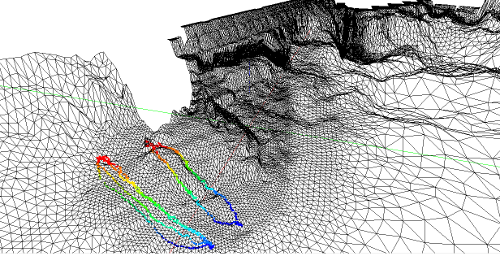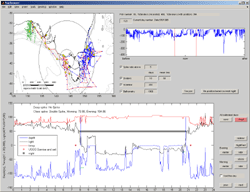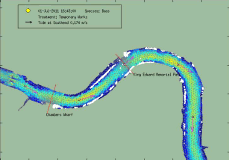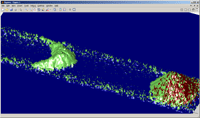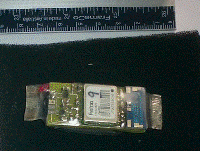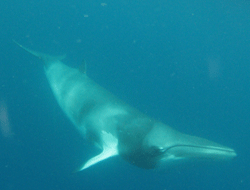
Secure areas - passwords and usernames required
Free access
areas
I'm building robot fish
Past projects
I worked with Animal Dynamics as a Technology Design Lead for aquatic projects. Our work in aquatic development was research where we were building devices for underwater trials. I can't show examples here as the work was classified. Here's an early prototype which isn't.
Oxford
University Department of Zoology (again)
While at Oxford University Department of Zoology for the second time (I was there in 2009 working on pigeons) I worked as a reseach assistant on a project investigating the hydrodynamics of Hillstream Loaches (for 4 years starting in 2014). Here is a link to a dedicated web site which explains all that. One of the most rewarding parts of this research was learning how to keep these fish thriving in aquaria. Here is a picture showing many young fish feeding happily together.
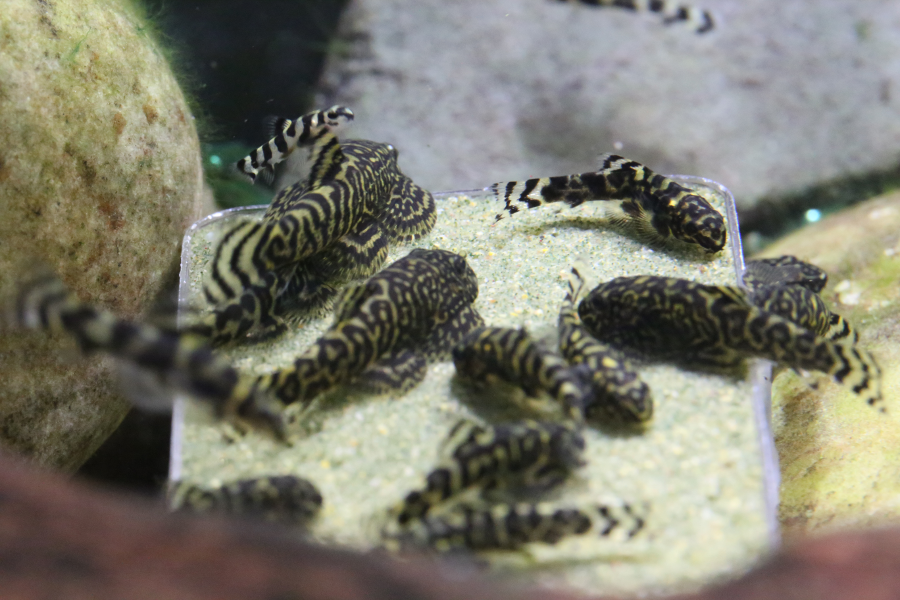
Water models and models of fish in water for Impact Assessment
While at Turnpenny Horsfield Associates I worked on models of water and models of fish swimming in water. Mainly for the impact assessment of large aquatic development projects such as Swansea Tidal Lagoon, and Thames Tideway Tunnels. But I also worked on many smaller projects such as for Teddington Weir Pool and the impact of low-head hydro power on fish habitat. Here is a picture of the model grid for Teddington, the river is tidal and the flow through the weirs was also variable, leading to an interesting water model and study of impacts of various changes to flow through gates (which could be varied to produce a desired result). On the top right is one of the many fish-in-water models for Swansea Tidal Lagoons.
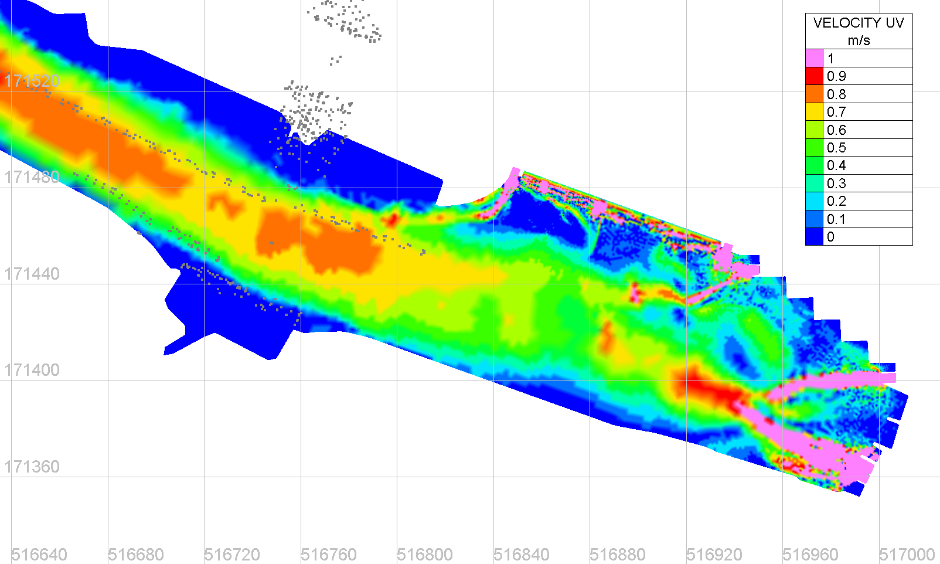
Experimentation with fish at Turnpenny Horsfield. We looked at fish response to turbulent structures, and built extensive trials.
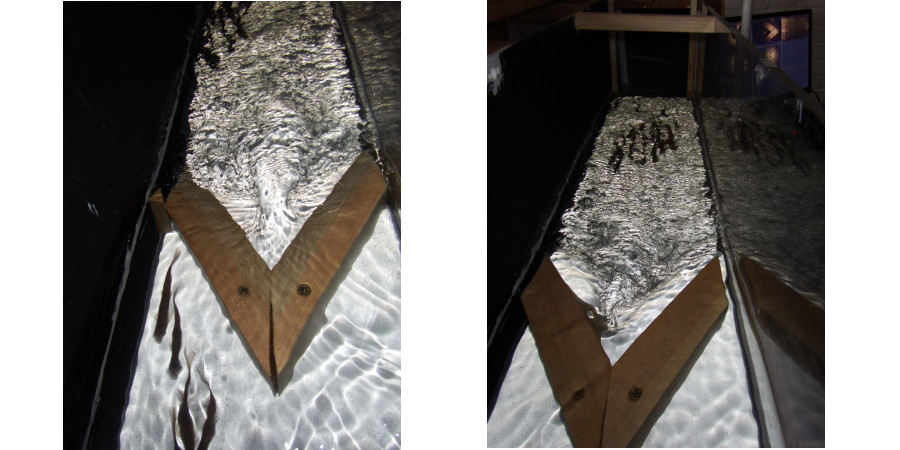
| Wake
sorting and cooperative schools |
|
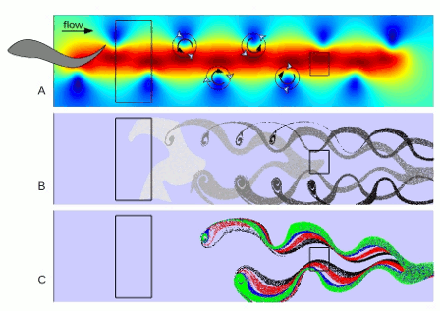 |
|
| I
have started researching the possibility that small
oceanic fish which form very large schools might be
creating turbulence to sort their prey. The idea is that
the wake formed behind a fish may be adapted to push
certain sizes of prey toward different zones behind the
fish, which a following fish could exploit. It could
have huge ramifications on understanding of why fish
school and why it is best to keep the populations of
these fish locally high. It looks promising but these
are early days for this one. I've published a paper on
this one, see pubs. |
|
|
|
|
Native oyster larvae |
|
| Native oyster used to be common along the South coast of the UK. The population is now much reduced. I made these models to help with questions around the best way to manage the existing fisheries in the Solent. We experimented with simple behavioural rules which had significant impacts on the final settlement patterns. |
 |
|
|
|
|
Salmon smolt on the Severn |
|
|
This project was part of the Strategic Environmental Assessment of tidal power schemes in the Severn in 2010. The main question addressed by these fish models was related to how many times it was likely that a migrating smolt would be drawn through the turbines. I have recently published a review paper summarising the methods used.
|
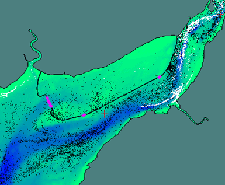 |
|
|
|
|
Models of swimming larvae
|
|
 |
Even very small (a few mm) larvae of aquatic animals swim. Some swim laterally, such as coral larvae, which swim toward the sounds of reefs. While others swim vertically to take advantage of tides around complex coastlines. These models can be very useful to understand environmental impact, fisheries management, or the benefits of marine protected areas. I have made many models of larvae swimming vertically in complex dynamic tidal systems. The picture on left is from a recent paper on Manila clam larvae around Poole Harbour. |
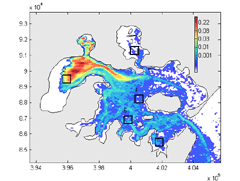 |
|
|
|
|
|
Track analysis and tuna observations
|
|
|
Here is a screen shot of an application I developed to analyse the tracks of tuna from archival tags. Sometimes the tags were in the fish for over a year and each 4 mins they recorded depth, light and temperature. It is a challenge to locate the fish from these data.
|
|
|
|
|
|
Theory of school formation
|
|
|
This modelling was extended from a simple grid based model of how gas aggregations formed. The basic concept is that particles move around randomly until they bump into each other when they join together to form a group. Then the group continues to move around like a singleton. When two groups meet, they combine, and so on. If you start with many singletons they eventually form one big group. That's the end point - the equilibrium, but - like life - the really interesting stuff happens in the dynamic zone away from equilibria. The graph here shows how groups of 2 or 3 build up and diminish as the model progesses from many groups of one to one group of many. This graph shows how perfectly the patterns from a dynamic model (red diamonds) fit a theoretical mathematical model (line).
|
|
| Thames
tunnels |
||
|
||
 |
||
|
|
||
|
Simulated fish
|
||
|
|
||
|
These fish models are designed to investigate the way fish swim in schools and the balance of school fidelity over swimming efficiency. This is a frame from a video which is available to view. • Link to video of these fish. |
|
Cellular Automata used for modelling sandwaves and megaripples
|
|
|
These models are made one cell at a time, and when simple rules are applied complex dynamic and realistic shapes can appear. I added to the basic design by putting in complex current fields and multiple grain types, which led to some very realistic looking shapes - the ultimate was one which resembled chocolate chip ice cream melting - but it had a serious purpose in that it also resembled sand formations after dredging works.
|
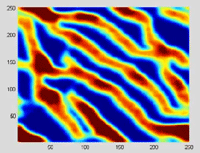 |
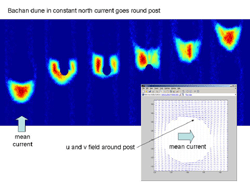 |
|
|
|
|
|
Pigeon tracks in Google Earth
|
|
|
We
made a very small GPS tag for use with Manx shearwaters
but tested it on pigeons, and this is an example of a
track from one of those tests. The pigeon in this case
is flying back along the A34, although it appears
to prefer the quieter lane alongside. Perhaps it likes
to be near isolated leafy trees next to the smaller
road, looking for potential food and protection.
|
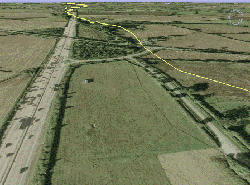 |
|
|
|
|
Interfaces and theoretical models for learning track analysis
|
|
| Here is an example of an application I made to contrast various theories relating to albatross movements. It was designed to be used by students. | 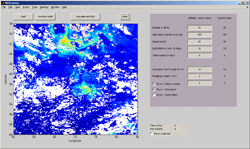 |
|
|
|
|
Krill and whales
|
|
|
|
I made an attempt to understand how whales maintain a high abundance of krill. Because evolutionary theory makes this a highly likely scenario, and the lack of a 'krill surplus' after most whales in the Southern Ocean were killed was a paradox which could potentially be answered through this type of work. I made a model of krill and whales which investigated if a risk aversion strategy by krill was consistent with current understanding of their life history. The model suggests that it is possible that whales force krill into 'grow fast, die young' habitat, when, left to their own devices, they would choose a 'grow slow, live long' habitat. |
|
|
|

